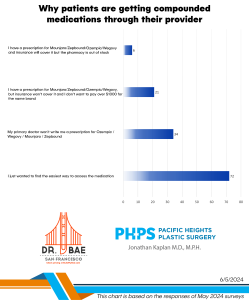 Lip injections are more common and less taboo due to many celebrities getting injections with fillers. This is a safe procedure that is FDA approved but patients still have their concerns. Below are the five questions I repeatedly hear from patients considering lip injections.
Lip injections are more common and less taboo due to many celebrities getting injections with fillers. This is a safe procedure that is FDA approved but patients still have their concerns. Below are the five questions I repeatedly hear from patients considering lip injections.
1. How can I avoid duck lips?
Patients want to plump up their lips don’t want duck lips. However, they see enough people walking around with ridiculous fullness to their lips. Consumers need to understand that duck lips are completely avoidable. Since fillers produce immediate results, the patient should engage with their doctor in deciding how much filler to inject into the lips during the procedure. They should look at their lips with a handheld mirror throughout the treatment. With close inspection, there’s no reason the patient should be surprised by suddenly inflated lips. Which leads us to the next question – how much filler does a patient need?
2. How much filler do I need?
Fillers commonly used in lip injections include Juvederm and Belotero. These fillers come in 1cc syringes. If it’s your first treatment, consider using less than one full syringe to avoid duck lips. A small amount of filler gives a refined appearance to the lip and may be enough. If there is additional filler left in the syringe, the patient shouldn’t feel the need to use it all in their lips. You can choose to inject the rest into the parentheses lines.
3. How many needle sticks are required?
At least one needle stick will be necessary in each quadrant which includes the top right lip, the top left lip, the bottom right lip and the bottom left lip. The best technique appears to be placement of the needle stick along the edge of the red of the lip, rather than in the red of the lip itself. Injections into the red of the lip will increase the risk of bleeding and therefore, bruising.
4. Will I bruise after filler injections to my lips?
Anytime someone sticks a needle in your face, bruising is a possibility. This is especially so if the injection is directly into the very vascular lips. However, by placing the injection along the edge of the lip, an area referred to as the wet-dry junction, bruising can be minimized.
5. Will it hurt?
Topical lidocaine cream can reduce pain associated with lip injections. While this will reduce the pain of the actual needle stick, there is also pain associated with the gel filler going into and spreading inside the tissues. Topical creams won’t help this deeper pain. However, a dental block will numb the entire region and make lip injections virtually painless. Not all doctors know how to perform a dental block, therefore, you should ask if your doctor performs dental blocks when you call to schedule your appointment. Even if the person answering the phone doesn’t know, they can find out for you.
If you’re considering lip injections, check pricing from Dr. Kaplan here.
Click here for the original blog post written by Dr. Jonathan Kaplan for BuildMyBod.




